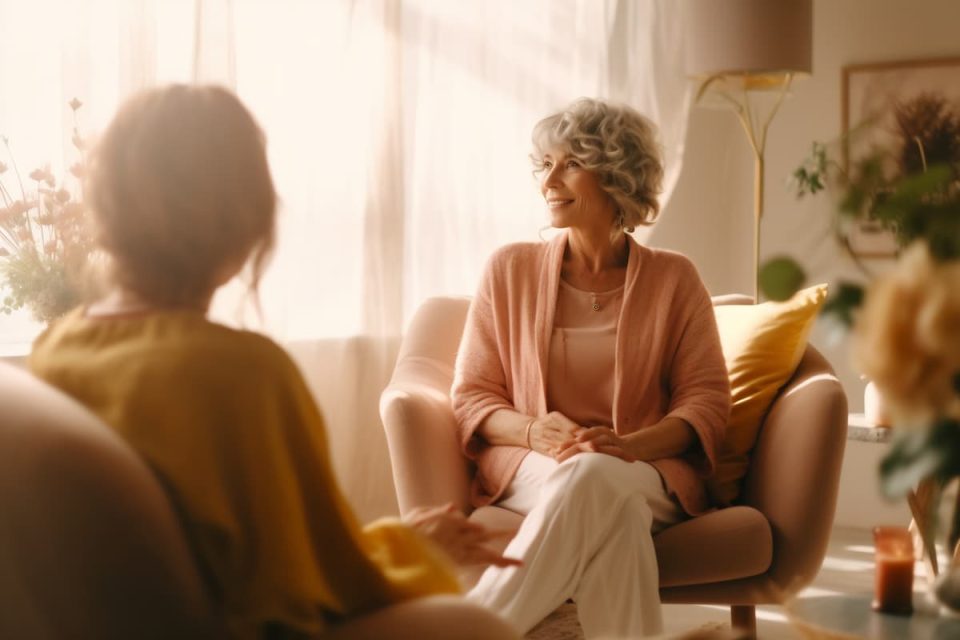Anxiety is a mental health condition characterized by intense, persistent worry or fear that can interfere with daily activities. Although many different types of anxiety have been identified, the underlying emotion of all of them, without exception, is the same: fear. In this article, we will do a brief overview of the main types of this disorder, followed by some insights of what this fear truly is and why we are experiencing it.
Generalized Anxiety Disorder (GAD)
This is characterized by chronic, excessive worry about a variety of everyday situations. Individuals may find it difficult to control their apprehensions and often expect the worst, even when there is no apparent reason for concern.
Social Anxiety Disorder (Social Phobia)
This involves an intense fear of social situations and a worry about being judged or scrutinized by others. Social interactions may trigger feelings of self-consciousness, embarrassment, or inadequacy.
Panic Disorder
People with panic disorder experience sudden, intense episodes of fear, known as panic attacks. These attacks can come on suddenly and may include symptoms such as rapid heartbeat, shortness of breath, and trembling.
Agoraphobia
This is an intense fear of places or situations where escape might be difficult, such as crowded spaces, open areas, or public transport. Agoraphobia often coexists with panic disorder.
Specific Phobias
These are excessive fears triggered by specific objects or situations, such as heights, animals, or flying. The level of fear is usually disproportionate to the actual danger posed.
Obsessive-Compulsive Disorder (OCD)
Although it’s often categorized separately, OCD is closely related to anxiety. It involves persistent, unwanted thoughts (obsessions) and repetitive behaviors or thoughts (compulsions) aimed at reducing anxiety.
Post-Traumatic Stress Disorder (PTSD)
This disorder occurs in some people who have experienced a traumatic event. Symptoms may include flashbacks, nightmares, severe anxiety, and uncontrollable thoughts about the event.
Separation Anxiety Disorder
Common in children but also found in adults, this involves excessive fear or anxiety about separation from home or from people to whom the individual is attached.
As you can see, all types of anxiety are ‘based’ on the same emotion – fear. The current treatment approach to dealing with anxiety can be summed up by the following: this fear is bad, let’s get rid of it. Instead of asking the question ‘What is this fear trying to achieve?’ or ‘What purpose could it possibly serve?’, we are doing our best to control it, suppress it and completely eliminate it. It feels bad, so we want it gone.
In our modern society, all the anxiety coping strategies, all the anxiety reducing techniques – every single method is aimed at making anxiety disappear. We seek anxiety relief the same way we seek pain relief – we want painkillers to make the problem go away. However, despite our efforts, the number of people diagnosed with various types of anxiety disorders is growing, as all our anxiety treatments seem to be failing.
But, just like a physical pain is a signal of the underlying problem, the emotional pain of anxiety – that fear that we are experiencing – is exactly that. It is a signal, asking us to pay attention to a process that is happening in the background. By suppressing anxiety symptoms, we are doing ourselves a disfavour by massively slowing this process down.
To understand this process, let’s start by asking a question: What are we so afraid of?
What is the very first anxiety a child can experience? Separation anxiety. The child is afraid of being alone, of being separated from the people who love and care about them.
But why are we afraid of being alone? Because we fear that now we are defenceless and can be easily harmed. That fear – that basic emotion that all of us experience while feeling anxious – is all about that. That is at the core of PTSD, agoraphobia and other specific phobias, social anxiety disorder, generalized anxiety disorder and the rest.
It’s the absence of the feeling of safety that drives our anxiety. But why do we no longer feel safe? Why do we feel less safe in the modern world compared to how things were in the past? What used to be the source of safety and comfort in the past that no longer exist in our times? If you answered ‘god’ or ‘religion’ or ‘tradition’, you are right. That’s the main difference. We have tried to replace the spiritual concepts with chemical medications, and we are wondering why it is not working.
In all our treatments, we attempt to deal with anxiety on one or two levels – either physical or mental. The issue is that, as humans, we are multilevel beings, and any problem should be addressed on all the levels that comprise us – physical, emotional, mental, social and spiritual. There needs to be a system that addresses all the levels simultaneously and the FLOW Method us just such a system. If you are dealing with anxiety and its debilitating symptoms, I’m inviting you to try the FLOW Method and see how it can make a difference in your life.


